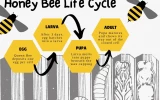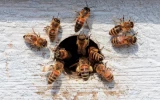When Do Queen Bees Stop Laying Eggs?
The queen bee is the heart and soul of a hive. If she goes missing, dies, or stops laying eggs, the hive, as well as the entire colony, can perish. When you open a hive and find little or no brood, you start wondering if the queen bee has stopped laying eggs. But when does this usually happen?
The queen bee stops laying eggs in either of the following four situations: during winter, when she’s having a brood break, when she’s no longer fertile, or when she’s preparing to swarm. Cold temperatures, especially in October or November make it hard for bees to raise larvae.
The queen bee stops laying eggs as the days become cooler and shorter. As food becomes scarce, and the days grow shorter, the queen bee's egg production slows, eventually ceasing entirely for the winter. Before the queen stops laying eggs, she will lay 'winter bees'.
Summary
- When the queen bee stops laying eggs, it is completely normal, and the bees simply go about their normal lives.
- As beekeepers, we should know where our dearest queen bee is whenever we visit the hive.
- Drones are unable to perform any other hive tasks such as larvae care, cleaning, honey production, or foraging, and that's why the worker bees forcefully kick them out, so the hive does not run out of food.
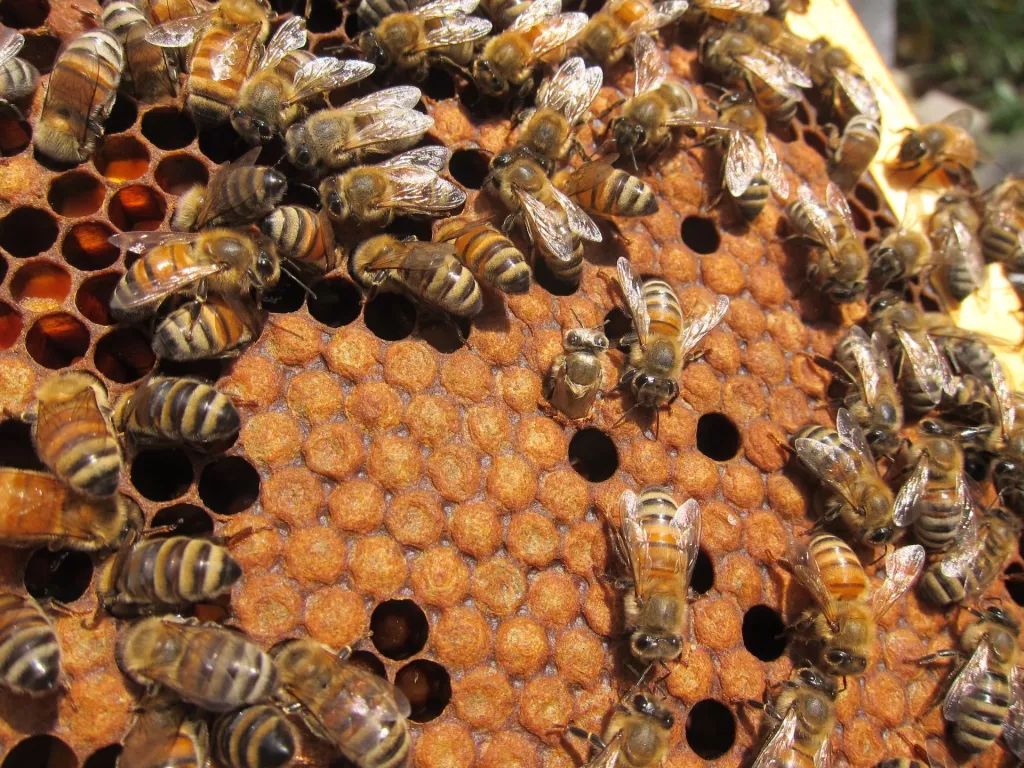
On this page:
Queen Bees Stop Laying Eggs In The Winter
The ability of queen bees to lay eggs varies according to the weather and climate throughout the year. The queen bee stops laying eggs completely in temperate regions during the winter.
The colony is put to the ultimate endurance test during the cold winters. Egg laying and brood rearing usually do not stop in subtropical, tropical, or mild winter conditions.
Even if pollen is stored in the combs, the queen bee's egg-laying slows and may stop entirely in October or November.
Before the queen stops laying eggs, she will lay the eggs that will hatch into "winter bees," or adult bees that differ slightly from summer bees. Because they were fed less pollen during development, these winter bees had their fat-producing gene activated. This is a special insect tissue designed to release energy.
Winter bees are physiologically designed to survive the winter. Their larger "fat bodies" and a lifespan that is three to four times that of summer bees will make them survive the freezing weather.
These bees live for six months instead of six weeks. And they will be in charge of keeping the colony alive throughout the winter.
At What Temperature Does A Queen Bee Stop Laying Eggs?
Winter temperatures are simply too cold for bees to raise larvae. The worker bees must keep the brood (eggs, larvae, and pupae) within a narrow temperature range of 34 +/- 1.5 degrees C (93 °F).
When the temperature falls below 50° F, the bees assemble in a tight cluster called thermoregulating cluster on the combs. The brood in this cluster is kept warm, at around 93° F, by heat generated by the bees.
If the hive has a large enough population and a plentiful supply of honey, the internal hive temperature will be kept between 54 and 94 degrees Fahrenheit. The queen is in the cluster's center, where it is warmest. The queen then stops laying entirely. This usually happens in November in the Pacific Northwest.
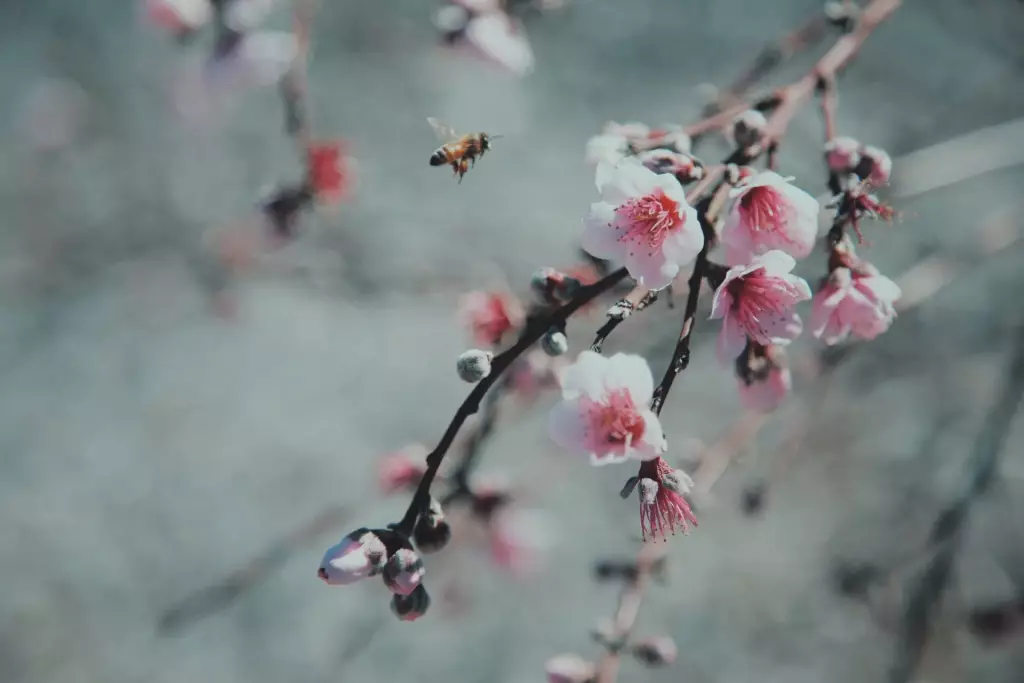
In some species, queen bees are the only bees that survive the winter. In late autumn or early winter, the queen bee stops laying eggs. This is done to protect the source of food.
When the nectar in the field runs out, the worker bees drag the drone bees out of the hive and refuse to let them return. The expelled drones are left to starve to death. Drones will most likely vanish overnight. The hive population has significantly decreased.
The workers do this because the drones are eating too much of the honey produced by the colony. Since honey is their food and energy source, it is required for their survival. The removal of drones reduces the consumption of winter honey stores.
The queen bee will reduce the number of eggs she lays each day after the first frost eliminates forage for the bees in the fall.
For the duration of the winter, a portion of the colony must be in contact with honey. As the bees consume honey, their bodies vibrate, producing heat.
To stay in contact with the honey, the cluster will gradually move upward among the combs. If the cluster loses contact with the honey stores, they will eventually die. This can happen even if tens of pounds of honey are stored horizontally to the left or right of the cluster.
Why Does A Queen Bee Stop Laying Eggs?
Another reason the queen bee stops laying eggs is that she is taking a "brood break". This is one way bees attempt to control the spread of brood disease. A queen taking a brood break is nothing to be concerned about. She should resume laying eggs soon.
The queen bee may also stop laying eggs in preparation for swarming. Honey bees swarm for a variety of reasons. It is a natural method of reproduction or population growth for bees. It usually occurs because the hive is overcrowded, and the queen has run out of room to lay eggs.
In this case, the queen will stop laying eggs and shrink in size in order to fly. When swarming occurs, the queen departs with a portion of the population to establish a new colony. The old colony will appoint a new queen and continue to thrive.
If it is not winter, brood break, or swarming and your queen bee stops laying eggs, you should be concerned.
A queen bee may slow down laying eggs due to infertility. This may be because the queen is aging and dying.
As a beekeeper, you have the responsibility to check up on your hive, especially your queen. If they're confused and disorganized, it could mean you're losing your queen.
How Long Does A Queen Bee Lay Eggs?
When the weather warms up in the spring, the queen bees begin to lay eggs, and their ability to lay eggs gradually increases and peaks in the summer.
In general, a queen never stops laying for long unless something goes horribly wrong. In some regions, increased egg-laying begins around the end of January or early February.
One beekeeper says that queen bees in the southeastern United States stop laying eggs around the middle of October. They usually resume laying in late December. Most queens stop laying because the new bees will consume all the honey if she continues to lay all winter.
The bees do not become foragers and help retrieve food for the hive until they are 19 days old. As a result, the queen bee waits until just before the warm weather arrives to begin rearing her brood.
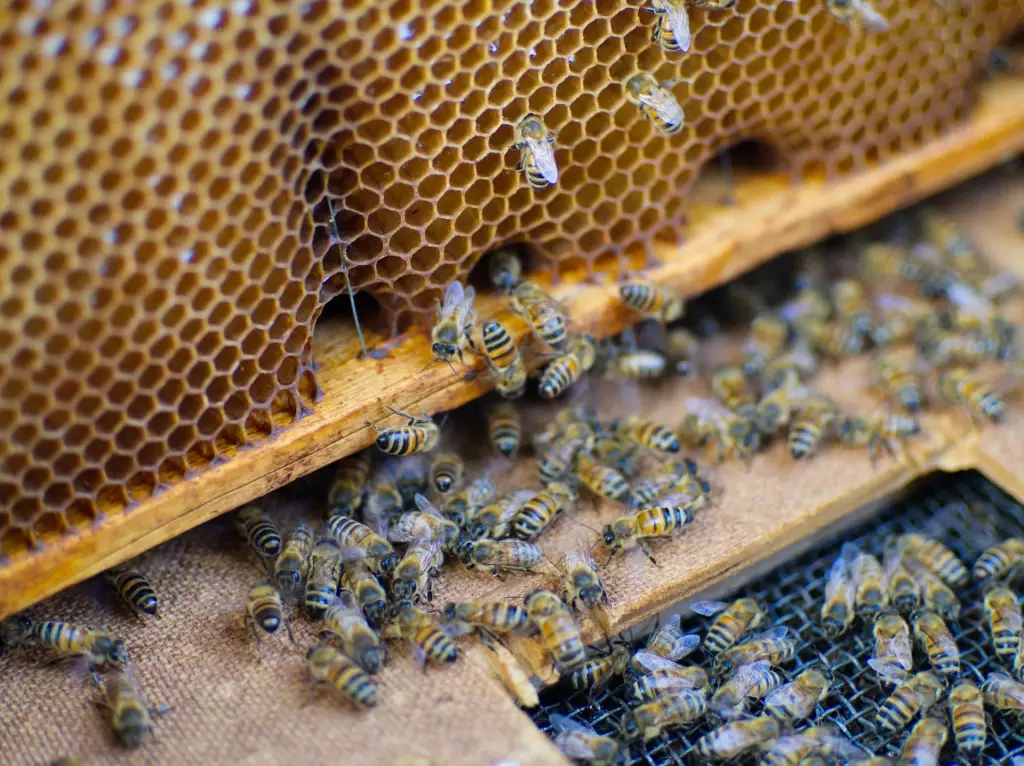
The queen bee's ability to lay eggs is also closely related to the location and bloom season of the plants that provide honey and pollen. When food is plentiful, the queen bee's ability to lay eggs is greater than when it is scarce.
During the winter, typically during December and January, the queen tends to stop laying eggs for a while. In some cases, she can continue to lay eggs throughout the winter.
As the days lengthen in late winter or early spring, the queen begins to lay eggs, and the colony raises a new brood.
The queen's egg-laying will increase dramatically as foraged nectar and pollen become more readily available with early spring flowers.
The colony will continue to grow throughout the spring and summer. From 5,000 bees in the winter, it will grow to 50,000 bees by midsummer.
